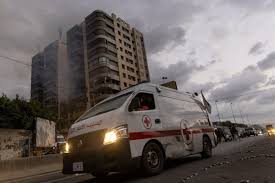
Elevating Frontline Health Workers: WHO Marks Cervical Cancer Elimination Day of Action
November 17 marks the fourth anniversary of the global strategy to eliminate cervical cancer as a public health problem, commemorated annually as Cervical Cancer Elimination Day of Action. This year’s observance, themed Elevating Frontline Health Workers: Transforming Global Commitments into Lifesaving Actions, underscores the vital role health workers play in delivering effective interventions for cervical cancer prevention, treatment, and survivorship care. Saima Wazed, WHO Regional Director for South-East Asia, highlighted the significance of this initiative, particularly for a region that bears a substantial burden of the disease.
Cervical cancer is the second most common cancer among women in the WHO South-East Asia Region, with an estimated 200,000 new cases and 120,000 deaths reported in 2022. This staggering toll represents nearly one-third of the global burden, emphasizing the urgent need for continued action.
Despite being largely preventable, cervical cancer persists as a significant public health issue. WHO's ambitious targets aim to address this by vaccinating 90% of girls with the HPV vaccine by age 15, screening 70% of women by the ages of 35 and 45 using high-performance tests, and ensuring that 90% of women with pre-cancer or invasive cancer receive appropriate treatment by 2030.
The South-East Asia Region has made notable progress in tackling cervical cancer, guided by the Regional Implementation Framework (2021–2030) and the Regional Strategy for Cancer Prevention and Management (2024–2030). Bhutan stands out with its health flagship project poised to meet the interim targets, while Indonesia has implemented a national plan with high HPV vaccination coverage.
Thailand’s "Cancer Anywhere" program provides free care for cervical cancer, ensuring accessible treatment for all patients. Additionally, several countries in the region have introduced HPV vaccination either nationwide or at the subnational level, with others establishing population-based screening programs and tertiary cancer care centers.
However, challenges persist. Vaccine supply shortages have hindered coverage in some areas, while the high cost of vaccines has delayed nationwide programs in others. Radiation therapy services remain insufficient, and access to palliative care is limited, leaving many patients without comprehensive support.
To accelerate progress, WHO emphasizes the importance of addressing these barriers. Expanding HPV vaccination coverage is crucial, and single-dose regimens offer a promising solution due to their comparable efficacy and reduced programmatic demands. Integrating cervical cancer screening into routine healthcare services through the primary care system can help reach underserved populations, particularly with the adoption of advanced tests like HPV DNA-based screening.
Strengthening cancer care capacity through improved diagnostic, surgical, and therapeutic services is equally essential. Universal health coverage must include cervical cancer management, along with palliative care, psychosocial support, and survivorship services to ensure holistic care for patients and families.
Saima Wazed emphasized that the fight against cervical cancer is a shared responsibility requiring collaboration from policymakers, health workers, civil society, and communities. On this Cervical Cancer Elimination Day of Action, the focus remains on turning global commitments into tangible, lifesaving actions. By working together, the region can bring the world closer to the goal of eliminating cervical cancer and ensuring that every girl and woman has access to the interventions needed to prevent and combat this disease.